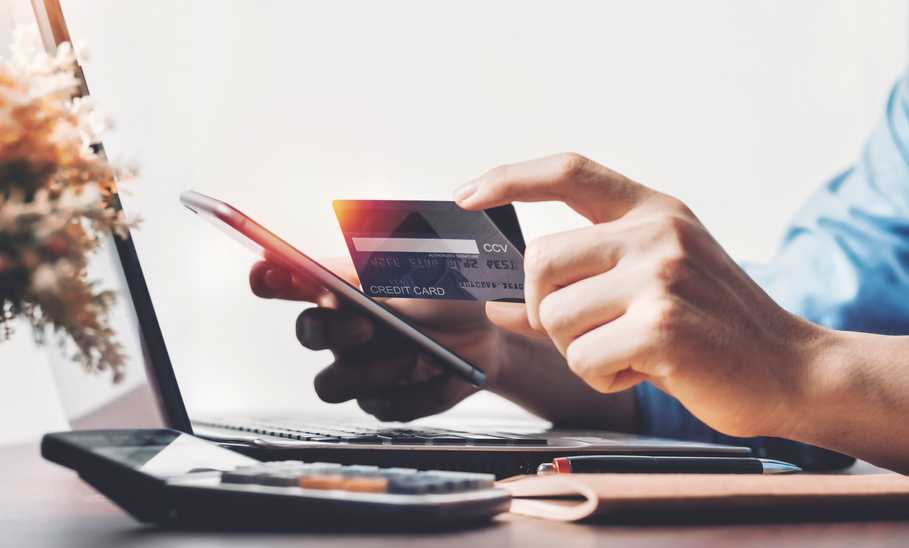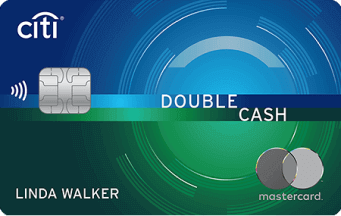Can I Transfer Money From a Credit Card to a Bank Account?

Our evaluations and opinions are not influenced by our advertising relationships, but we may earn a commission from our partners’ links. This content is created by TIME Stamped, under TIME’s direction and produced in accordance with TIME’s editorial guidelines and overseen by TIME’s editorial staff. Learn more about it.
If you need cash for an unexpected expense or to cover bills until payday, you might consider tapping your credit card. Cash advances and balance transfer checks allow you to withdraw part of your credit line in cash, which you could transfer to a bank account.
Transferring money from a credit card to a bank account can be convenient, but it can also be expensive if you're paying a steep interest rate or fees.

A cash advance is taken against your credit card limit. You can use the money you withdraw any way you like, and you repay it with interest. Your credit card company can also charge a cash advance fee, which may be a set dollar amount or a percentage of the amount you withdraw.
Balance transfers allow you to move an existing balance from one credit card to another. Credit card companies may offer a low, introductory annual percentage rate (APR) as an incentive to move balances to a new account.
As with cash advances, you’ll pay a fee to transfer a balance. Again, this can be a flat fee or a percentage of the amount you're transferring. The fee is typically added to your balance, meaning you'll have slightly more debt to repay.
You can apply for a cash advance or balance transfer online. Some credit card companies also issue cash advance or balance transfer checks. These are paper checks that you can write out to yourself, up to an approved limit, and deposit it to your bank account. Once the money is in your account, you can use it any way you like.
Credit card companies are not required to offer cash advances or balance transfers to customers. Generally, there are two categories of cards that allow transfers of money to a bank account.
A secured credit card requires collateral to open, often a cash deposit, after which you can make purchases against your credit limit. Your card may also allow you to take cash advances.
You usually pay a flat fee or a percentage, whichever is greater, to withdraw cash from your credit line. Your card issuer will likely limit the amount you can withdraw per transaction on a daily or monthly basis. The cash advance APR should be higher than your purchase APR, and interest generally starts accruing as soon as the transaction posts to your account.
A secured card can also allow balance transfers. Your credit limit usually determines the amount, and your card agreement will enumerate the fees and APR you’ll be charged.
You don’t need collateral to open an unsecured credit card. It gives you access to a credit line that you can usually tap for a cash advance or balance transfer. Different types of unsecured credit cards include:
Contacting the customer service number on the back of your card is a simple way to find out whether a cash advance or balance transfer is available.
Here's a quick rundown of some of the top credit cards that allow both kinds of money transfers.
| Credit Card Name | Type | Rewards |
|---|---|---|
Chase Freedom Unlimited | Unsecured | Cash back |
Chase Sapphire Preferred | Unsecured | Travel |
Discover it Secured | Secured | Cash back |
Discover it Cash Back | Unsecured | Cash back |
PNC Core Visa | Unsecured | None, but has a low intro APR on purchases and balance transfers |
U.S. Bank Altitude Go Secured Visa | Secured | Points |
U.S. Bank Altitude Connect Visa Signature | Unsecured | Travel |
Your card issuer determines your options for transferring money from your card to a bank account. These may include one or all of the following methods.
Convenience checks are paper checks you can write out to yourself for a cash advance or balance transfer. They work like personal checks, but instead of the money coming from your bank account and going to the payee written on the check, it goes from your credit line to your bank account.
If your credit card is issued by a brick-and-mortar bank, you may be able to take a cash advance in person at a branch. You'll need to provide a teller with your account details and proof of identity. Once your advance is approved, you can immediately deposit the cash in your bank account.
If you've selected a PIN for your credit card, you may be able to use it to withdraw cash at an ATM. This type of money transfer requires an extra step, as you then have to take the cash to your bank to deposit it (unless your bank accepts cash deposits through its ATMs).
You may be able to arrange a direct transfer of money from your credit card to your bank account online. To do this log into your credit card account, provide your bank account and routing numbers, and initiate the transfer. Chase and U.S. Bank are just two financial institutions that allow you to transfer funds from a credit card to your bank account online.
If your credit card allows you to transfer money to a bank account, there are rules you'll need to follow. You should also check with your bank to see if it has any restrictions on accepting transfers from a credit card.
Your credit limit will dictate how much money you can access for cash advances and balance transfers. For example, if your credit card’s regular purchase limit is $5,000, you might have a cash advance limit of $1,000 and a balance transfer limit of $4,000.
There may be limits on how much money you can deposit into your bank account daily, weekly, or monthly. There may also be restrictions on how you can make deposits. For example, you might be able to transfer funds into your account using an ACH transfer or mobile check deposit, but your bank might not allow cash deposits.
Banks can limit your ability to access the cash in your account. For example, if you're using an online bank, you may be limited to ACH transfers to an account at a physical bank.
Here's a quick look at the deposit and withdrawal policies at some of the top online banks.
| Bank | Deposit Cash | Withdraw Cash at an ATM |
|---|---|---|
Axos | Yes | Yes |
Chime | Yes, at Walgreens locations | Yes |
First Tech Federal Credit Union | Yes, at a branch | Yes |
Live Oak Bank | No | No |
Quontic | No | Yes |
Rising Bank | No | Yes |
SoFi | Yes, at participating Green Dot retailers | Yes |
Western Alliance Bank | Yes | Yes |
UFB Direct | Yes | Yes |
Cash advances and balance transfers can be convenient, but they can also be expensive. When you add in fees and interest, you could easily end up with a larger amount to repay.
If you're routinely relying on cash advances to cover expenses or using balance transfer checks to add money to your bank account, you’re also increasing your debt. This can negatively affect your credit score, because your credit utilization ratio, which measures the amount of credit you are using as a percentage, counts for 30% in calculating it. Your score could also suffer if you frequently apply for new credit cards, as new credit inquiries account for 10%.
If you need cash, there are ways to get it other than credit card cash advances or balance transfers. Some alternatives you might consider include:
There are also options you should avoid. One is a payday loan, which can be a convenient way to get money fast but comes with a high interest rate that can reach the triple-digit range. If you're unable to repay an advance in full by your next payday, you may have to roll over the balance, which can create a cycle of expensive debt. Payday loans are so dicey that they’re expressly prohibited or severely regulated in Washington D.C. and 21 states: Arizona, Arkansas, Colorado, Connecticut, Georgia, Hawaii, Illinois, Maryland, Massachusetts, Minnesota, Montana, Nebraska, New Hampshire, New Jersey, New Mexico, New York, North Carolina, Pennsylvania, South Dakota, Vermont, and West Virginia.
Credit card cash advances and balance transfers provide a simple way to access cash, but the costs can be high. Read the fine print on the offer and consider other possibilities for getting the money you need before committing to one.
Yes, if your card issuer allows for cash advances or balance transfers. Some of the ways you might transfer funds include a direct online transfer, convenience checks, and cash withdrawals from an ATM.
Bank accounts are debit accounts, as money goes out when you pay bills, withdraw cash, or make purchases with your debit card. You can transfer money from a credit card to a debit account, though your choice of bank may dictate your options for depositing funds.
Discover has credit cards that offer both balance transfers and cash advances, so you could use either one to move money into your bank account. Comparing the fees and interest rates for each will help you decide which option is best.
There are several ways to send money to yourself from a credit card. They include:
The information related to Citi Double Cash® Card has been collected by TIME Stamped and has not been reviewed or provided by the issuer or provider of this product or service.
The information presented here is created by TIME Stamped and overseen by TIME editorial staff. To learn more, see our About Us page.



